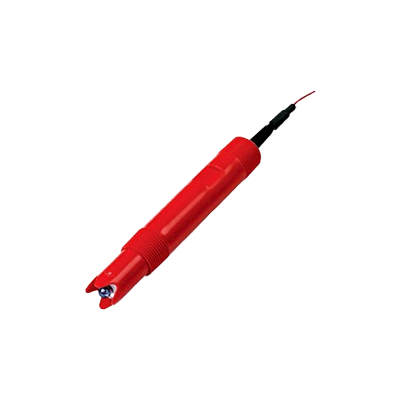A Deep Dive into the ABB TB556J1E50T20 pH Electrode — Reliable & Rugged for Industrial Use

In this blog post, we’ll take a comprehensive look at the ABB TB556J1E50T20 pH electrode — what it is, where it shines, how to use it, and why it may be the right choice for your application. We’ll cover keywords such as ABB, pH electrode, TB556J1E50T20, industrial sensor, Kynar body, process measurement, water quality monitoring, solid-state reference, and more — to make sure you get the full picture.
What is the ABB TB556J1E50T20?
The ABB TB556J1E50T20 is a model in the ABB “TB556 / TBX556” series of industrial pH/ORP sensors.
Key points:
- It is built for continuous industrial process monitoring of pH (and in some variants ORP) rather than simple laboratory use.
- The body is made of Kynar (PVDF) material (or PPS in some other versions) for excellent chemical resistance.
- It uses ABB’s Next Step™ solid state reference technology, which reduces the problems of liquid reference poisoning, pumping, or plugging, common in conventional sensors.
- It is available in different insertion lengths, and supports submersion, insertion, flow-through, and hot-tap installation styles.
- The code “J1E50T20” is part of the full model number, which helps define particular features such as cable length, junction type, insertion depth, etc.
Putting it simply: If you need a robust, factory-grade pH sensor for a demanding environment, the TB556 series (including TB556J1E50T20) is designed for that.
Why Choose This Electrode? What Makes It Stand Out
There are several features that make the ABB TB556J1E50T20 a strong choice:
1. Durability & harsh-environment suitability
- The Kynar (PVDF) body gives chemical resistance for aggressive media or high particulate loads.
- It supports operating temperatures up to 140 °C (284 °F) and pressures up to ~21 bar (300 psi) or higher (depending on version).
- The construction includes “measuring, reference and temperature elements all in one compact body.”
- The “solid‐state reference” means fewer problems over time — lower maintenance.
2. Versatile installation
- The sensor is designed for different types of mounting: insertion into a pipe, submersion/immersion, flow-through cell, hot-tap.
- For example: “TB(X)556 sensors are threaded style sensors suitable for submersion (immersion) and insertion into the process pipes.”
3. Accuracy & monitoring features
- With the integrated temperature compensation (in many models of the series) and robust reference, measurement stability is improved in real-world process conditions.
- The description says: “The sensors are easily applied to most industrial measurement needs. They are renowned for their ability to outperform conventional sensors in the industry’s toughest process applications.”
4. Brand & ecosystem
- Being from ABB means there is availability of service, compatible systems, known reliability.
- The TB556J1E50T20 model is listed by multiple distributors as “100% New & Original” with warranty.

Typical Applications
Where would you use the TB556J1E50T20? Here are some common applications:
- Industrial water treatment: monitoring pH in cooling water systems, boiler feed water, chemical dosing.
- Wastewater treatment: pH control for effluent, sludge, etc.
- Process industries: chemical processing, power plants, pulp & paper, food & beverage where continuous monitoring of pH is critical. The Yuli Automation site says: “The TB556J1E50T20 is suitable for various water quality conditions, including wastewater treatment, cooling water cycles, river and lake monitoring, and industrial reaction control.
- Harsh environments: due to temperature/pressure resistance and chemical durability, suited for aggressive media or high particulate load.
Installation & Best Practices
To get the best performance out of the TB556J1E50T20, here are some tips:
- Calibration: Perform regular calibration with standard pH buffers (e.g., pH 4.00, 7.00, 10.00) as part of your routine maintenance.
- Mounting: Choose the correct insertion depth, thread size (the TB556 series uses ¾ in NPT for many models) and orientation (immersion, insertion, flow-through) according to your process.
- Temperature compensation: Make sure the system uses the sensor’s built-in temperature compensation (if applicable) or external compensation to avoid drift due to temperature changes.
- Cleaning & maintenance: In high particulate or fouling environments, periodically clean the glass membrane and junction area. Solid-state reference helps with plugging issues, but maintenance still matters.
- Check compatibility: Ensure the sensor’s cable length, connector type and junction style match your analyzer or transmitter system. The code “J1E50T20” likely defines such specific attributes.
- Service & spare parts: Even though the sensor is rugged, plan for replacement or spare sensors in critical applications to avoid downtime.
Limitations & Considerations
While the TB556J1E50T20 is strong in many respects, keep in mind:
- Initial cost is higher than simple laboratory pH electrodes (as industrial sensors usually are).
- While the solid-state reference mitigates many problems, it does not eliminate all maintenance — the membrane can still age, coatings can foul, calibration can drift.
- Ensure that the process conditions (temperature, pressure, media composition) are within the sensor’s rated limits — exceeding those limits will shorten life.
- While robust, if your application has extreme ultra-high pressure or extremely corrosive media (e.g., strong oxidizers at high temperature), you may need to check with ABB’s detailed specs or select special materials.
Why the Model Code Matters: TB556J1E50T20
The model number “TB556J1E50T20” contains clues about the specific version of the sensor. For example:
- “TB556” refers to the series (Kynar body, pH/ORP sensor)
- The subsequent parts (J1E50T20) typically denote: junction type, insertion length, cable length, mounting thread, etc.
In fact, one datasheet for a related model (TB55611E50T20) lists: “Measuring Electrode 1 Flat glass (10 to 100 °C, 0 to 14 pH) … Body Style 50 = 5.0 in. insertion depth … Cable length 20
Hence, when you order or specify the sensor, make sure the full code matches your process needs.
Summary & Final Thoughts
In short, the ABB TB556J1E50T20 pH electrode is a professional-grade industrial sensor offering robustness, versatility, and high performance for demanding process measurement environments. Choosing this model means you’re opting for:
- A sensor that handles harsh conditions (temperature, pressure, chemical exposure)
- Reliable measurement with reduced downtime due to ABB’s solid-state reference technology
- Compatibility with multiple installation styles (insertion, immersion, flow‐through)
- A brand and ecosystem that supports service and replacement parts
If you are working in industrial water quality control, chemical processing, power generation, or any environment where pH monitoring is critical and failure or drift is unacceptable, the TB556J1E50T20 should be high on your shortlist.
If you like, I can pull up the full datasheet for this model (with electrical specs, mounting dimensions, cable options) or show you how to integrate it with a specific analyzer. Would you like me to do that?
